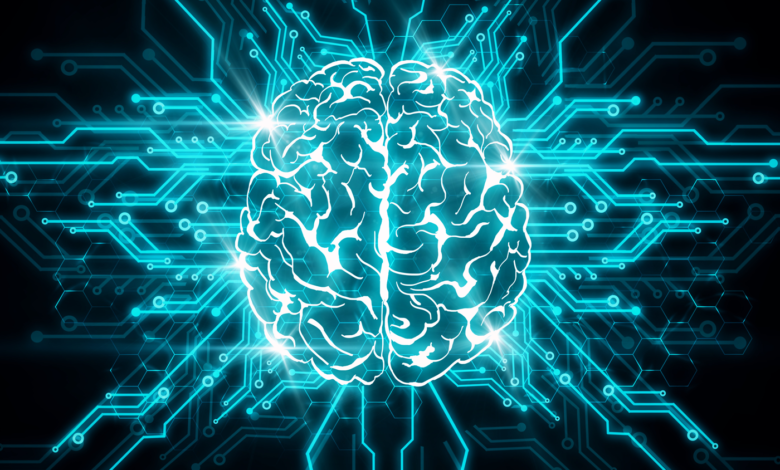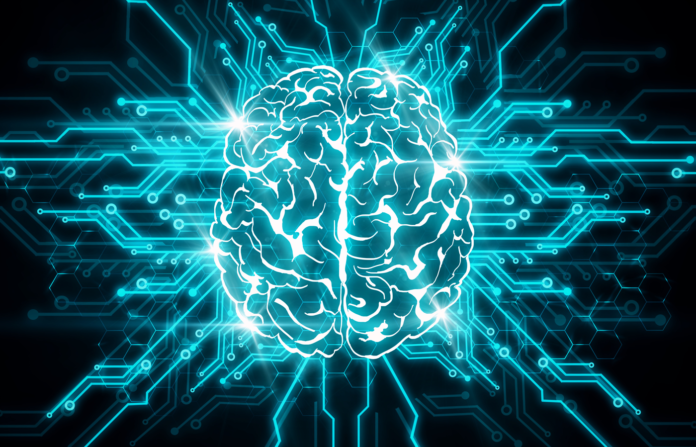Key Differences and Use Cases

Generative AI is a form of artificial intelligence designed to generate content such as text, images, video, and music. It uses large language models and algorithms to analyze patterns in datasets and mimic the style or structure of specific content types.
Machine learning (ML), on the other hand, helps computers learn tasks and actions using training modeled on results from large datasets. It is a key component of artificial intelligence systems. Let’s examine the question of generative AI vs. machine learning, dig deep into each, and lay out their respective use cases.
KEY TAKEAWAYS
- •Generative AI builds on machine learning to create new content from patterns in data. (Jump to Section)
- •Machine learning focuses on analyzing data patterns and making predictions. (Jump to Section)
- •Both technologies are crucial for addressing complex challenges and enhancing human creativity and productivity. (Jump to Section)
Comparison Chart: Generative AI vs. Machine Learning
Generative AI and machine learning are closely related technologies, as the chart below illustrates. While generative AI excels at creating content, machine learning is geared for data analysis and statistical models.
| Generative AI | Machine Learning | |
|---|---|---|
| Definition | Generates new content | Analyzes data to make predictions |
| Use of algorithms | Advanced, creative algorithms | Data pattern recognition |
| Output | Text, images, video, music | Predictions, classifications |
| Application areas | Content creation, design | Data analysis, cybersecurity |
| Technology base | Large language models, GANs | Statistical models, algorithms |
History and Evolution of Generative AI vs. Machine Learning
Over the course of several decades, the evolution of both generative AI and machine learning has been driven by the continuous development of algorithms designed to perform specific tasks.
Over the past decade, these algorithms have grown exponentially more complex, and at their most advanced, can gain functionality without continued human input. This ability to grow without human input is the very core of artificial intelligence, which is the foundation for both generative AI and machine learning.
In the last few years, advancements in computing power and data availability – enabled by cloud computing platforms like Amazon Web Services and Microsoft Azure – have enabled significant progress. Machine learning emerged first, focusing on identifying patterns and making data-driven decisions. Generative AI built upon these foundations, introducing models capable of creating new, original content by learning from vast datasets.
The major breakthrough for generative AI came in November of 2022, when OpenAI launched ChatGPT, an application that creates content based on text prompts and natural language queries.
What is Generative AI?
Generative AI is an emerging technology that uses artificial intelligence, algorithms and large language models to generate several types of content, from text to images to video.
Machine learning makes use of deep learning and neural network techniques to generate content that is based on the patterns it observes in a wide array of other content. Although this content is classified as original, in reality generative AI uses machine learning and AI models to analyze and then replicate the earlier creativity of others. It taps into massive repositories of content and uses that information to mimic human creativity.


With generative AI you can perform tasks like analyzing the entire works of Charles Dickens, JK Rollins or Ernest Hemingway to produce an original novel that seeks to simulate these authors’ style and writing patterns. Thus, generative AI ventures well beyond traditional machine learning. By utilizing multiple forms of machine learning systems, models, algorithms and neural networks, generative AI offers a new foray into the world of creativity.
Use Cases for Generative AI
Generative AI is used to augment but not replace the work of writers, graphic designers, artists, and musicians by producing fresh material. It is particularly useful in the business realm in areas like product descriptions, and can create many variations to existing designs. It can also help an artist explore novel concepts across various mediums. Here are some of its use cases, ranging from generative AI enterprise use cases to smaller scale implementations.
Retail
Generative AI significantly enhances retail operations by automating the creation of product descriptions, generating personalized marketing content, and optimizing inventory management.
For example, Amazon uses generative AI to create unique and SEO-friendly product descriptions, which improves search engine rankings and ultimately attracts more customers. This technology also enables hyper-personalized promotional messaging that adapts content to individual customer preferences based on their purchase history and browsing behavior. While machine learning focuses on analyzing data to provide recommendations, generative AI takes it a step further by creating the content itself.
Business
Generative AI in business can be seen in operations like generating reports, visualizing data, and creating marketing materials. Businesses can automatically generate business reports by analyzing large datasets and extracting key insights, which reduces errors and the time taken for these tasks. This allows business analysts to focus on strategic decision-making rather than mundane report preparation. In comparison, machine learning is typically used to analyze data patterns and provide predictive insights, while generative AI builds on these insights to produce comprehensive reports and presentations.


Healthcare
In healthcare, generative AI aids in the creation of synthetic medical data for research, developing personalized treatment plans, and enhancing diagnostic accuracy. Again, generative AI builds upon the foundation laid by machine; while machine learning excels in identifying patterns in medical data, generative AI goes further by generating new data and treatment scenarios that can aid in medical research and diagnostics.
Manufacturing
Generative AI is a welcome technology when it comes to prototyping. It optimizes product design and manufacturing processes by generating multiple design prototypes based on specific constraints and inputs.
Multiple companies today use this technology to improve product designs and improve their manufacturing process, which leads to cost reductions and enhanced product performance. While machine learning is used to predict maintenance needs and optimize production schedules, generative AI enables the creation of innovative designs and solutions that can be directly implemented in manufacturing.
Financial Services
In the financial sector, generative AI enhances services by generating custom financial reports, automating the detection of fraudulent activities, and improving risk management. For example, PayPal uses generative AI to analyze transaction data from emails, social media posts and phone calls to identify potential fraud in real-time, resulting in a secure transaction environment for its users. Where machine learning typically detects patterns and anomalies, generative AI not only identifies these issues but also creates detailed reports and strategies to address them.
Customer Support
Generative AI improves customer support through advanced chatbots and virtual assistants. Companies are adopting generative AI-powered chatbots to handle a wide range of customer inquiries, from product recommendations to order tracking. These chatbots continue to become increasingly similar to humans.
They can understand and respond to customer queries in a natural and conversational manner. The result: customers are more likely to leave the interaction satisfied and human agents will enjoy a lighter workload, at least in terms of customer queries. Generative AI can create personalized and contextually appropriate responses, making interactions feel more human-like and more effective than simple ML-based agents.
What is Machine Learning?
Machine learning uses artificial intelligence to learn and adapt automatically without the need for continual instruction. Machine learning is based on algorithms and statistical AI models that analyze and draw inferences from patterns discovered within data. Once set up, the ML system applies itself to a dataset or problem, spots situations and solves problems. It utilizes algorithms to parse data, learn and make decisions. Machine learning models train on large amounts of data to gradually learn and improve their accuracy rates over time.
The ML models used can be supervised, unsupervised, semi-supervised or use reinforcement learning. Regardless of how the model operates, it’s all about recognizing patterns and making predictions and drawing inferences, addressing complex problems and solving them automatically. Algorithms are procedures designed to solve well-defined computational or mathematical problems to complete computer processes. Modern ML algorithms go beyond computer programming as they require understanding of the various possibilities available when solving a problem.
Machine learning algorithms, then, can be regarded as the essential building blocks of modern AI. Machine learning finds a pattern or anomaly among the noise of data and finds paths to solutions within a time frame that no human could. Furthermore, machine learning helps impart autonomy to the data model and emulate human cognition and understanding.
Use Cases for Machine Learning
Machine learning has a great many use cases – and the use cases are continually expanding. In fact, machine learning has crept into just about every conceivable area where computers are used. Machine learning is found in data analytics, rapid processing, calculations, facial recognition, cybersecurity, and human resources, among other areas. Machine learning use cases include:
Retail
Personalization is one of the key use cases of machine learning. In retail, machine learning personalizes shopping experiences by recommending products based on customer behavior. For example, Amazon’s recommendation engine suggests products that match a user’s previous purchases to drive a sizable portion of its sales and enhance customer satisfaction. This personalized approach explains how Amazon has maintained a competitive edge and improved user loyalty.
Other uses include dynamic pricing, with algorithms that adjust prices in real-time based on market demand and competition to guarantee competitive pricing strategies. Additionally, ML optimizes supply chain and inventory management. It predicts stock levels to reduce costs and improve efficiency. Retailers also use customer behavior analytics to gain insights into preferences, enabling targeted marketing and personalized shopping experiences.


Business
Machine learning (ML) improves business operations by improving efficiency, reducing costs, and driving growth. One key application is predicting lead conversion, where ML algorithms analyze lead pipelines to prioritize and target potential customers effectively, which in turn enhances sales processes and boosts revenue.
Revenue forecasting benefits from ML by analyzing historical data and market trends to get accurate financial predictions that help with strategic planning and cash flow management. Additionally, product demand forecasting uses ML to predict customer demand accurately, optimizing inventory management, reducing overstock and stockouts, and aligning production with market needs.
A use case of machine learning for enhancing decision-making through predictive analytics can be seen in IBM’s Watson. IBM’s Watson leverages machine learning to analyze vast datasets, providing actionable insights and recommendations that help companies optimize operations, improve customer service, and drive innovation. For instance, Watson assists in various industries, from healthcare to finance, by offering predictive maintenance solutions and risk management.
Healthcare
In healthcare, machine learning is revolutionizing diagnostics, treatment plans, and patient care. For instance, convolutional neural networks (CNNs) are used to diagnose diseases like skin cancer with high accuracy. Predictive analytics help healthcare providers anticipate patient outcomes and optimize treatment plans.
Personalized medicine is another significant application, where treatments are tailored to individual patients based on their genetic makeup and health data. ML also plays a critical role in medical imaging, assisting in the analysis of images for conditions such as arrhythmias and arterial plaque buildup, thus enhancing diagnostic accuracy and speed.
Google’s DeepMind Health uses machine learning algorithms to analyze medical records and imaging data for early detection of diseases like diabetic retinopathy; its goal is to provide more accurate treatment recommendations.
Manufacturing
Machine learning is driving efficiency and quality in manufacturing through predictive maintenance, quality control, and supply chain optimization to optimize production processes. Companies like General Electric (GE) use machine learning to predict equipment failures and schedule maintenance, thereby reducing downtime and increasing efficiency.
By analyzing data from various sensors and historical maintenance records, GE’s machine learning models help in proactive maintenance planning, ensuring smoother and more cost-effective operations.
Financial Services
Machine learning is crucial in detecting fraud and managing risks in financial services. For instance, PayPal uses machine learning algorithms to analyze transaction patterns and identify fraudulent activities in real-time. Such a proactive approach helps to mitigate risks and ensure secure transactions for millions of users worldwide.
Additionally, machine learning models assist in credit scoring and risk assessment, providing more accurate evaluations of financial profiles. It’s also not uncommon to find machine learning used to provide personalized investment advice that’s adapted to individual financial goals and risk tolerance.
Customer Service and Support
Machine learning enhances customer service through the deployment of chatbots and virtual assistants. Companies like H&M and Sephora use machine learning-driven chatbots to offer instant support, product recommendations, and virtual try-on experiences.
The outcome? Improved customer engagement and satisfaction. These chatbots leverage natural language processing to understand and respond to customer queries, freeing up human agents to handle more complex issues. Sentiment analysis of customer feedback helps businesses improve service quality and address concerns proactively.
Marketing
In marketing, machine learning analyzes customer data to create targeted campaigns. This helps marketers to understand and optimize conversion and retention rates. For example, Netflix uses machine learning to analyze viewing habits and preferences, generating personalized recommendations for each user. This targeted approach not only improves user engagement but also increases retention rates by providing content that aligns with individual tastes. Machine learning helps marketers design more effective campaigns by predicting customer behavior and preferences.
By understanding and optimizing customer interactions, ML reduces acquisition costs and increases conversion rates. Content curation tools like Curata use ML to personalize content based on user preferences, boosting engagement and ROI.
IT
IT operations benefit from machine learning in network security, predictive IT operations, and automated support. For a widespread use case like infrastructure management and monitoring, companies use machine learning models to predict potential system failures, optimize resource allocation, and automate routine maintenance tasks. For instance, Google’s Site Reliability Engineering (SRE) team employs machine learning to analyze logs and performance metrics, identifying anomalies and preventing outages before they occur.
Banking and Finance
Algorithmic trading, customer insights, and compliance automation are some of the use cases often seen in finance. ML models analyze financial data to inform trading strategies and predict market trends. It’s typical to find modern banks using ML to gain deeper insights into customer behavior and as a result adapting financial products and services accordingly. Compliance checks and monitoring of financial transactions are also automated using ML.
A common use case of ML streamlining banking operations is the automation of processes like loan approvals and customer service. JP Morgan Chase uses machine learning algorithms to review legal documents and extract key information, significantly reducing the time required for contract analysis. Additionally, machine learning models help in detecting money laundering activities by analyzing transaction patterns and flagging suspicious behaviors.
Generative AI vs. Machine Learning: 7 Key Differences
Objectives
Machine learning primarily focuses on analyzing data to identify patterns, make predictions, and provide insights based on learned relationships. It is often employed for tasks such as classification, regression, and clustering. On the other hand, generative AI wants to create new, original data that mimics the patterns and structures observed in the training data. Generative AI models are used to produce text, images, music, and other forms of content that are becoming more and more indistinguishable from human-created data.
Outputs
The outputs of machine learning models typically consist of predictions, classifications, or decisions based on the analysis of input data. For example, a machine learning model might predict future sales based on historical data or classify emails as spam or not spam.
In contrast, generative AI models produce entirely new data instances, such as generating an original image or writing a coherent piece of text. This capability allows generative AI to be used in creative and artistic applications where new content creation is required.
Performance Metrics
Machine learning models are generally evaluated based on predictive accuracy metrics such as precision, recall, and F1 score. With these metrics you can measure just how well the model’s predictions match the actual outcomes. Generative AI models, on the other hand, are assessed using qualitative metrics that evaluate the realism, coherence, and diversity of the generated content. Quantitative metrics like loss functions can also help in fine-tuning the performance of generative AI models.
Use Cases
Machine learning is widely used in applications like predictive modeling, recommendation systems, image and speech recognition, and fraud detection. These applications benefit from the model’s ability to learn from data and make accurate predictions.
Generative AI, meanwhile, excels in creative tasks such as generating text, with the most popular example being ChatGPT. Other leading examples are tools like DALL-E, Midjourney and Stable Diffusion, composing music and even generating video content. This makes generative AI suitable for applications in entertainment, content creation, and any field requiring innovative and original outputs.
Complexity and Resource Requirements
Generative AI models are often more complex because of their creative nature and the diversity of outputs they produce. It’s normal for them to need lots of computational resources and extensive training times to achieve high-quality results. In comparison, ML models, depending on the specific algorithm and application, can vary in complexity and resource needs. Some ML models are relatively simple and efficient, while others, like deep learning models, can also demand significant computational power.
User Interfaces
The user interface (UI) for machine learning applications typically involves dashboards and visualizations that display analytical results, predictions, and trends. These interfaces are designed to help users interpret data insights and make informed decisions.
In contrast, generative AI interfaces often include tools for content creation, such as text editors, image generators, and design software. These tools allow users to input parameters and generate creative outputs, providing a more interactive and exploratory experience.
Learning Curve
The learning curve for implementing machine learning solutions is generally steep, which means that you’ll need a solid understanding of statistics, data science and algorithm development. You may also need to be proficient in data preprocessing, model training, and evaluation. However, even though generative AI, while also complex, may need expertise in specific generative models, many generative AI tools are becoming more user-friendly, with interfaces that allow non-experts to create content through simple prompts and parameters.
Advantages and Limitations of Generative AI
For all of generative AI’s advantages and capabilities, it’s plagued by a number of limitations. Here are some of the pros and cons to expect with generative AI.
Advantages
- Generative AI can produce diverse content such as text, images, music, and videos, making it valuable for tasks like generating articles, marketing copy, and design prototypes.
- It automates repetitive tasks, optimizing operational workflows and reducing human error, especially in software development.
- Generative AI performs well in understanding and responding to contextual nuances in natural language, making it suitable for applications like conversational agents and customer support.
- By expediting processes like content creation and decision-making, it saves time and optimizes resource utilization for users.
- It can analyze extensive datasets to understand customer preferences, which leads to unprecedented product or service personalization that yields improved customer experiences.
Limitations
- Generative AI models aren’t safe from bias as they can perpetuate biases present in their training data to put out biased or discriminatory outputs.
- While it can create new content, generative AI often relies heavily on existing patterns, meaning its ability to produce truly original content is limited.
- Training and running generative AI models require substantial computational power, making it resource-intensive and potentially inaccessible for smaller businesses.
- The powerful capabilities of generative AI are associated with numerous risks and raise ethical issues, such as the potential for creating deepfake content and spreading misinformation.
- Its output may vary in quality and sometimes contains errors; it needs constant careful inspection and validation.
Generative AI vs. Machine Learning: 3 Supporting Technologies
Transformer Networks
Transformer networks are a critical technology for both generative AI and advanced machine learning models, especially in natural language processing (NLP).
Transformers use self-attention mechanisms to process input data non-sequentially, capturing long-range dependencies and relationships within the data. This allows them to generate coherent text and improve translation accuracy, as seen in models like GPT-3 and BERT. The transformer architecture has revolutionized NLP by providing more accurate and contextually aware models compared to earlier architectures like recurrent neural networks.
Generative Adversarial Networks (GANs)
Generative Adversarial Networks (GANs) consist of two neural networks—the generator and the discriminator—that work in opposition to create realistic data. GANs are essential in generative AI for tasks such as image and video synthesis, where they generate high-quality, realistic outputs.
In machine learning, GANs are used for data augmentation and anomaly detection, enhancing model robustness by generating synthetic data to balance training datasets. This dual-use makes GANs a versatile tool in both creative and analytical domains.
Neural Networks
Neural networks are fundamental to both generative AI and machine learning, serving as the backbone for many AI models. In machine learning, neural networks are used for tasks such as image recognition, speech processing, and predictive analytics.
Deep learning, a subset of neural networks with multiple layers, is particularly effective in handling complex data and extracting high-level features. In generative AI, neural networks are used to create new content, from generating realistic images with GANs to producing coherent text with transformers. The layered structure of neural networks allows them to process extensive data and perform complex tasks with high accuracy.
Generative AI vs. Machine Learning: Ethical Considerations
It’s true that generative AI and machine learning have brought significant advancements across various fields. However, they also raise critical ethical issues that can’t be ignored if we want to have responsible development and deployment. Let’s go over some of ML and generative AI’s ethical issues.
Bias and Fairness
Both generative AI and machine learning models can inherit and perpetuate the biases in their training data. This often yields discriminatory outcomes, such as facial recognition systems failing to recognize individuals of certain races.. To address these biases, we need diverse training datasets and ongoing monitoring to ensure AI applications are fair.
Data Privacy
Generative AI and machine learning systems need large amounts of data to function effectively. This raises significant concerns about data privacy and security. For instance, if sensitive personal information is used to train these models, there is a risk of data breaches and misuse. AI companies must implement robust data governance policies and comply with data protection regulations to safeguard user information.
Misinformation and Deepfakes
Generative AI has the potential to create highly realistic fake content, such as deepfake videos and fabricated news articles. This leads to misinformation, which breeds distrust, as it becomes increasingly difficult to distinguish between real and fake content. To mitigate these risks, ethical guidelines and verification mechanisms should be set up to ensure the responsible use of generative AI technologies.
Intellectual Property and Ownership
The outputs of generative AI, such as text, images, and music, raise questions about intellectual property rights and ownership. Since these models are often trained on existing works, there’s a risk of infringing on the intellectual property of original creators. The most direct solution to this would be to institute clear policies and frameworks to address these issues and protect the rights of content creators.
Explainability and Transparency
Machine learning models, particularly deep learning models, can be complex and opaque. It can be challenging to understand how they arrive at specific decisions, which can hinder trust and accountability. Implementing explainable AI techniques can help demystify these models, providing insights into their decision-making processes and enhancing transparency.
Ethical Use in Sensitive Applications
Both generative AI and machine learning are increasingly used in sensitive areas such as healthcare, finance, and legal systems. The challenge is ensuring they are used ethically; these areas have no margin for error as mistakes can lead to harmful outcomes. For example, inaccurate AI-driven medical diagnoses or biased financial assessments can have severe consequences. Rigorous testing, validation, and ethical oversight are necessary to ensure the safe and fair deployment of AI in such fields.
Generative AI vs. Machine Learning: Future Trends
With their track record of constant disruption, it can be tough to predict where AI and ML will go next. Nonetheless, based on current patterns, we can expect to see more adoption of both technologies, greater transparency of models, and more multimodal implementations, among other trends.
Generative AI Trends
- Hyper-personalization: Generative AI is increasingly being used to create personalized experiences for individual preferences and we can expect to see more of such. This includes personalized product recommendations, custom marketing content, and individualized user experiences in applications like e-commerce and digital media.
- Conversational AI: Conversational agents and virtual assistants are getting more life-like with the advancements of generative AI. These AI-driven systems can now understand and generate human-like responses, making customer service interactions more natural and efficient.
- Multimodal learning: Generative AI models are evolving to handle multiple forms of input, such as text, images, and audio for more versatile and engaging interactions. This will enhance the effectiveness of AI in various applications, including virtual assistants and customer service bots that can see, listen, and respond to users in a more human-like manner.
- Wearable AI devices: The development of wearables powered by generative AI is expected to grow, though many will face challenges related to privacy, security, and user experience. Successful iterations of these devices could revolutionize personal computing and interaction with technology.
- Retrieval-augmented generation (RAG): This technique, which combines search capabilities with large language models (LLMs), is maturing and is expected to become mainstream. RAG reduces hallucinations and enables users to verify answers through citations embedded in the model’s responses.
Machine Learning Trends
- Edge AI: The deployment of more effective and efficient ML models on edge devices like smartphones and IoT devices is becoming more prevalent. This enables better real-time data processing and decision-making at the source of data generation.
- Automated machine learning (AutoML): AutoML platforms are making it easier for non-experts to develop ML models by automating the end-to-end process of model selection, training, and deployment. This democratizes access to powerful ML tools and accelerates the adoption of AI technologies across different sectors.
- Explainable AI (XAI): As AI systems become more integrated into critical decision-making processes, there is a growing demand for models that can provide transparent and interpretable outputs. Explainable AI techniques should evolve to make the decision-making process of ML models more understandable to humans.
- Customized local models: There is a growing trend towards developing custom AI models using open-source tools and proprietary data. This allows organizations to create highly specialized AI solutions based on their needs, which can be deployed on local infrastructure to maintain data privacy and reduce dependency on external providers.
Generative AI vs. Machine Learning: 3 Courses To Consider
As generative AI and machine learning continue to evolve, staying updated with the latest knowledge and skills is crucial for anyone looking to advance in these fields. Should you be seeking to understand these technologies at a still deeper level, here are three courses from Coursera that provide in-depth guidance.
Generative AI for Everyone by DeepLearning.AI
This course, taught by Andrew Ng, provides a complete introduction to generative AI. It covers the basics of how generative AI works, its applications, and its potential impact on various industries. The course includes practical exercises to help you apply generative AI concepts in real-world scenarios; it’s a good fit for beginners and professionals looking to enhance their understanding of generative AI.
Introduction to Generative AI by Google Cloud
Offered by Google Cloud, this course focuses on the fundamentals of generative AI, which include its model types, its working and its applications, and sets you up for follow up courses like the more specialized Introduction to Generative AI Learning Path. It suits those looking to understand the basics of generative AI and explore its applications using Google Cloud tools like Vertex AI.
Generative AI with Large Language Models
This course delves into the use of large language models (LLMs) for generative AI. It covers the working of generative AI, insights from AWS experts who build and deploy these models, as well as the latest research on generative AI.
Bottom Line: Generative AI and Machine Learning Are Different Yet Closely Related
Comparing generative AI vs. machine learning shows that while both technologies use advanced algorithms and vast datasets, their applications and outcomes are substantially different. Machine learning excels in data analysis, identifying patterns, and making predictions, which are critical for optimizing operations and decision-making in industries like finance, healthcare, and retail.
In contrast, generative AI focuses on creating new and original content, making it an asset for content creation, entertainment, and personalized user experiences. As different as they may be, they are in fact closely related: both technologies are a subset of AI, and will continue to work together. As they continue to evolve, their convergence promises to unlock new possibilities.
To see a list of the leading generative AI apps, read our guide: Top 20 Generative AI Tools and Apps




